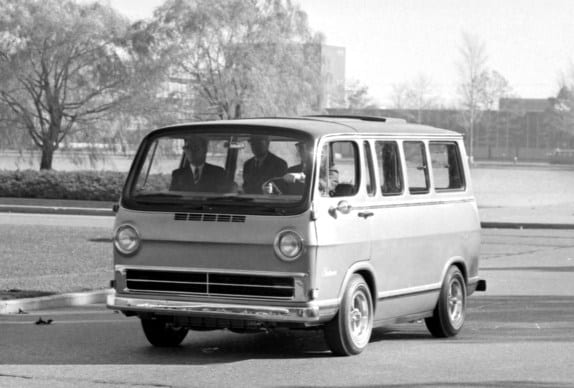History of Hydrogen
2018
-
HyDeploy: UK’s first hydrogen blending deployment project launched with focus on injecting zero-carbon hydrogen into the natural gas network

2017
Ministerial Council on Renewable Energy, Hydrogen and Related Issues publishes Japan’s Basic Hydrogen Strategy

2017
Launched in April, Energy Observer is a multipurpose cargo ship and the first vessel in the world to both generate and be powered by green hydrogen

2017

Hydrogen Council set up to accelerate the development and commercialization of hydrogen and fuel cell technologies
2012
Hydroma, a Canadian company previously known as Petroma, re-discovered a hydrogen-rich aquifer in Bourakébougou, Mali

2005
Twenty-three states in the USA have hydrogen initiatives in place

1999

The Royal Dutch/Shell Company committed to a hydrogen future by forming a hydrogen division. Europe’s first hydrogen fueling stations were opened in the German cities of Hamburg and Munich
1998
Iceland unveiled a plan to create the first hydrogen economy by 2030 with Daimler-Benz and Ballard Power Systems

1974
The International Energy Agency (IEA) was established in response to global oil market disruptions. IEA activities included the research and development of hydrogen energy technologies

1966
General Motor’s Chevrolet Electrovan was the first road vehicle to used a hydrogen fuel cell

1958

NASA has been using hydrogen as rocket fuel since inception. The taming of liquid hydrogen is one of NASA’s most significant technical accomplishments
1955
General Electric produced the first hydrogen-and-oxygen fuel cell called a proton-exchange membrane (PEM), which was the type of fuel cell used to generate power for NASA’s Gemini Space Mission in the 1960s

1937

Dayton Power & Light Co. launched the first hydrogen- cooled turbogenerator, which went into service with gaseous hydrogen as a coolant in the rotor and the stator
1932

Francis Bacon developed the first commercial fuel cell in 1932, running on pure O₂ and H₂ and using an alkaline catalyst and nickel electrodes
1931
Steam reforming was first used to produce hydrogen in BatonRouge by Standard Oil

1926

First patents of steam methane reforming of natural gas were awarded to BASF
1921

Mine gases recorded at Leopoldshall Salt Mine in Stassfurt, Germany that flowed for at least 4.5 years, producing hydrogen at a rate of 128 cubic feet per day
1913
Ammonia was first manufactured on an industrial scale at BASF’s Oppau plant after the German chemical company bought the process

1909

Fritz Haber and Carl Bosch, German chemists, developed high pressure devices and catalysts to produce ammonia from atmospheric nitrogen by making it react with hydrogen, creating the Haber-Bosch process used today
1895
Helium gas was first discovered by Sir William Ramsay
![]()
1888

Earliest published report of natural gas containing hydrogen, which seeped from a coal mine near the city of Makiivka, in the Donetsk region of Ukraine, was by Dmitri Mendeleev who documented that the gas contained 5.8–7.5% hydrogen
1875
Jules Verne, French novelist, prophetically examined the potential use of hydrogen as a fuel in his popular work of fiction entitled The Mysterious Island

1852

Henri Giffard invented the first hydrogen lifted airship that led to ‘Zeppelins’ being used for passenger transport
1839

Sir William Grove, Welsh scientist, came up with the first fuel cell technology
1834

Michael Faraday introduced the word electrolysis, a process that enabled the development of the first fuel cells for electricity / power / heat generation
1807

Francois Issac de Rivaz created the first internal-combustion-engine vehicle to be powered by hydrogen using a balloon filled with hydrogen, and oxygen
1800

William Nicholson, English scientist and Sir Anthony Carlisle, English surgeon, discovered how the process of electrolysis worked when they attached wires to the either side of Alessandro Volta’s voltaic pile, the first electric battery to ‘dissolve’ water into its component gases: hydrogen and oxygen
1784

Martin van Marum, Dutch scientist, created an electrostatic generator using a process that later became known as electrolysis
1783

Jacques Charles invented the first hydrogen-filled balloon
1783

Antoine-Laurent Lavoisier, French chemist, obtained water by reacting oxygen with ‘inflammable air’. He is credited for naming the compound hydrogène after the Greek for water (hydro) forming (genes)
1766

Henry Cavendish, English physicist, recognized hydrogen as a discrete substance and called it ‘inflammable air’. He was given the credit for the discovery of hydrogen as a chemical element
1671

Robert Boyle, Anglo-Irish chemist and physicist, discovered and described the reaction between iron filings and dilute acids that results in the production of hydrogen gas










